The EOAfrica ARIES Project
The EOAfrica ARIES project is part of a bigger research framework that enables the continuous development and adoption of Earth observation (EO) capabilities in Africa. Within this project, we specifically focus on algorithm development related to agricultural water management and food security.
Phase 1: Thermal and Hyperspectral Data Products
In November 2024, phase 1 of the EOAfrica ARIES project ended. We successfully developed, validated, and prototyped thermal data products (drought index and high-resolution crop water stress) and hyperspectral data products (leaf area index, leaf water content, and canopy water content) to improve the monitoring of drought conditions and the detection of water stress in support of food security.
During the development process, we collaborated with users in Senegal, Mali, Niger, and Zambia and we incorporated their requirements and feedback in these products. The African communities were very interested in our project outcomes, as the turnout of the user workshop in Zambia was significant. You can learn more about the project activities and results of phase 1 in the Final Report or in this webinar recording.
Phase 2: More Indices for Drought Stress and a More Inclusive User Group
In June 2025, the second phase of the EOAfrica ARIES project has kicked off. VISTA and VITO will now build on the findings of phase 1 together with end users AKTC and GART from Zambia and AGRHYMET in Niger. This time, we will also integrate a new user group of smallholder farmers to provide input in the development process.
In this new phase, which lasts one year, we will focus on three areas:
- We will continue generating indices for drought stress based on hyperspectral and thermal data, this time explicitly checking the potential of these indicators in a smallholder farming context.
- We will research the potential of hyperspectral data in the context of regenerative farming, e.g. for determining soil properties.
- We will investigate the potential of hyperspectral data for monitoring dry biomass availability in agro-pastoral zones in the Sahel region. Our main goal is to assess dry grassland biomass, but we will also monitor crop residues on agricultural fields. Nomadic pastoralists who make large migrations through this region with their herds in search of food will be able to use this information during the dry season to plan a suitable route to graze their cattle.
Looking Ahead
With the findings of the EOAfrica ARIES research project, we aim to demonstrate the added value of the innovative use of hyperspectral and thermal satellite data for agricultural monitoring in Africa. These results will flow into recommendations for the design of upcoming Sentinel satellite missions to improve food security on the African continent. Stay tuned and follow ARIES on LinkedIn for updates.



